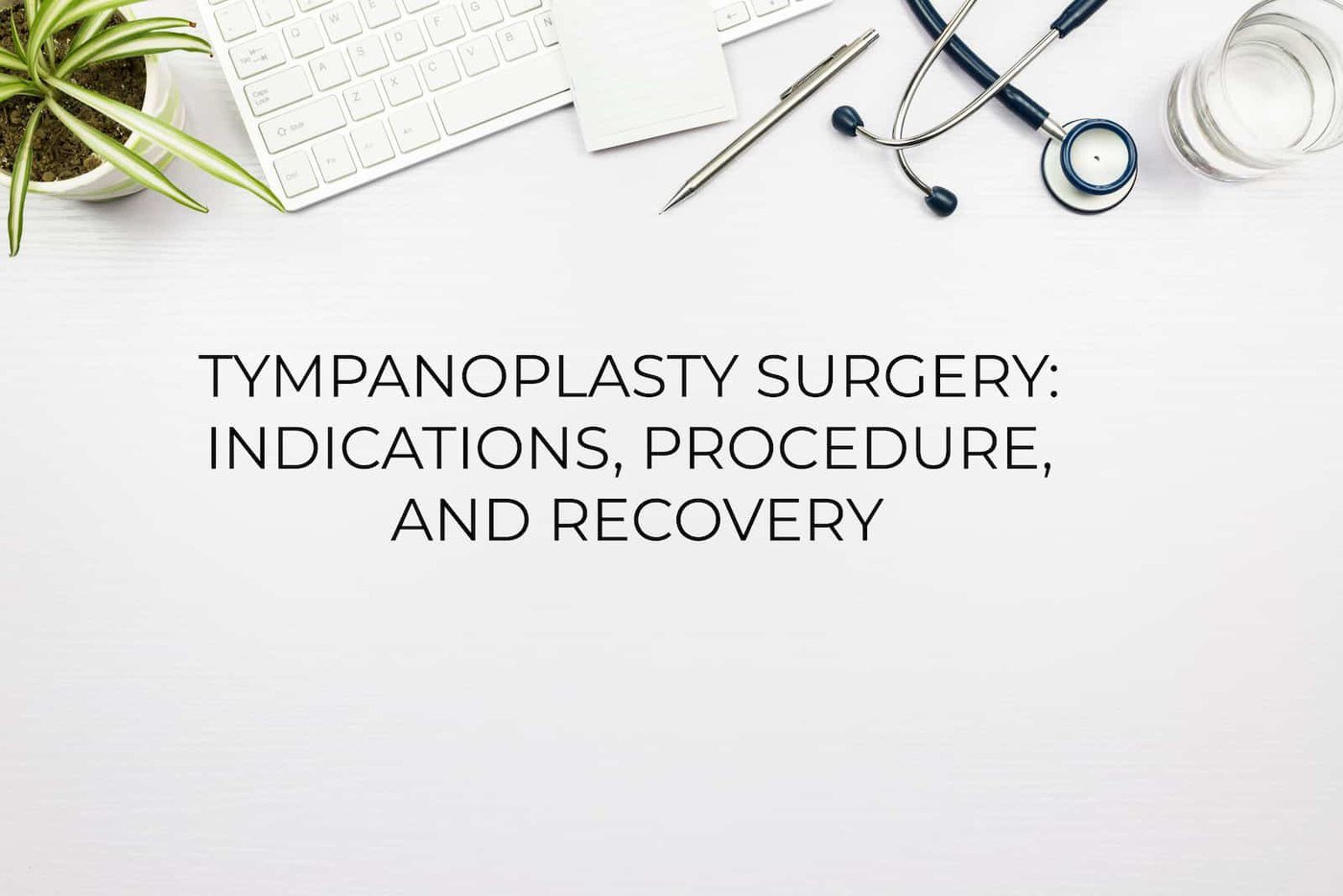Tympanoplasty Surgery: Indications, Procedure, and Recovery
September 14th, 2022 | 4 min. read

Tympanoplasty surgery is a procedure that rebuilds the eardrum. There are many reasons why. Disease of the ear drum or hearing bones may benefit from reconstruction. A common reason for this surgery is a perforated eardrum (a hole in the eardrum).
A perforated eardrum may be caused by:
- Exposure to loud noises
- Damage caused by a foreign object in the ear
- Head trauma
- Rapid pressure changes, which are often caused by frequent air travel or diving
Symptoms of a perforated eardrum include:
- Sharp pain
- Draining that may be bloody or pus-filled
- Tinnitus or ringing in the ears
- Progressive hearing loss
- Dizziness
Without adequate healing, the hole in the eardrum leaves the middle ear open to increased bacterial growth that may worsen hearing loss or cause permanent damage.
Commonly referred to as a tympanic membrane perforation, a perforated eardrum may heal within a few weeks. However, if the injury does not resolve independently, surgery is required to patch the hole.
Indications for Tympanoplasty Surgery
Tympanoplasty is a surgical intervention performed by a board-certified ear, nose, and throat specialist. It is performed in an outpatient setting with the patient placed under general anesthesia and directly supervised by an anesthesiologist and medical team. Typically, patients go home the same day.
Tympanoplasty surgery has three main goals in mind:
- Create a safe ear, free of disease
- Create a dry ear, free of drainage
- Restore or improve hearing
Children who have received multiple sets of ventilation tubes (ear tubes) that have been removed or have fallen out are at an increased risk of eardrum perforation. Additionally, children are at an increased risk if they develop a severe middle ear infection or have injured the eardrum with a foreign object like a Q-tip while cleaning the ears. For young children, your doctor may recommend waiting to perform this surgery in an effort to allow ear development to reduce the risk of postoperative complications.
Tympanoplasty Contraindications
Tympanoplasty may be performed on children or adult patients. It is a contraindicated procedure for patients who experience complications with anesthesia or who are not a good candidate to undergo general anesthesia.
Those who are not good candidates include patients with:
- Alcoholism
- A history of uncontrolled asthma, diabetes, hypertension, heart disease, renal insufficiency, seizures, stroke
- An allergy to anesthesia
- Obesity
- Obstructive sleep apnea
Tympanoplasty Procedure
Below we go over how to prepare for tympanoplasty surgery, what to expect during the procedure and after.
How to Prepare for Tympanoplasty
Before your ear, nose, and throat specialist schedules tympanoplasty surgery, a hearing test will be needed to assess your baseline hearing abilities. The results of this test will be compared to a hearing test that will be conducted once you have healed from surgery to determine the degree of improvement surgery allowed.
You will be scheduled for a preoperative appointment within the office of the ENT practice you will be using where they will conduct a well-check to ensure you are healthy enough for surgery. Additional testing will be required through a primary care doctor or specialist if there are underlying conditions. The ENT surgeon will provide you with a detailed pre-surgery checklist. These instructions will outline when to stop eating food or drinks, what medications are acceptable on the day of surgery, and general instructions on what to expect. Because tympanoplasty surgery is performed under general anesthesia, your stomach will need to be empty the morning of surgery unless directed to take prescription medications with a small sip of water.
If you are an adult undergoing the tympanoplasty procedure, plan to have a friend or family member available to drive you to and from the hospital as you will not be permitted to drive following the use of general anesthesia.
What to Expect During Tympanoplasty Procedure
A tympanoplasty procedure is a specialized approach to repairing a perforated eardrum to protect the middle ear, reduce the risk of bacterial growth, and improve hearing impairments resulting from the perforation. This procedure is performed in an operating room by a physician specializing in ear, nose, and throat disorders. On the day of surgery, you will be placed in a waiting room where your provider will meet you to ensure your vitals are stable and you are in good overall health to withstand the surgery.
An anesthesiologist will go over the risks associated with general anesthesia, have you sign paperwork providing consent, and then will administer general anesthesia to put you completely to sleep. The surgery can take anywhere from 30 minutes to 2 hours or more depending on the severity of scar tissue formation, how large the perforation is, and if any complications arise.
Once surgery has commenced, your surgeon will approach the area through the ear canal or a small incision behind the ear. Excessive scar tissue formed in the middle ear due to the injury is carefully removed to get an unobstructed view of the perforation. As the surgeon moves forward with the procedure, it will be determined what additional interventions will be needed, if any, to ensure optimal healing.
Often, a graft is needed to fully close a perforated eardrum. Grafts are often made with autologous (your own body’s) materials, usually from the same surgery site. Once the graft has been successfully placed, other areas are assessed like the middle ear bones. In cases of severe recurrent middle ear infections, the middle ear bones may be too damaged requiring them to be replaced with a prosthetic. Two common prosthetics used include:
- Partial ossicular replacement prosthesis (P.O.R.P)
- Total ossicular replacement prosthesis (T.O.R.P)
The type of prosthetic used will depend on the severity of bone damage visualized during surgery.
Upon completion of all necessary surgical steps, the incision is closed with stitches and you will be wheeled to the recovery room to be monitored for several hours as the anesthesia begins to wear off.
Tympanoplasty Recovery Time
The timeframe for a full recovery after tympanoplasty will vary from one person to the next. Most children and adult patients should plan to go home.
You will see your ENT for a one-week follow-up appointment to determine how well you are healing, to make sure there is no infection, and to remove the stitches placed during surgery. If there are no complications, you may be released to return to school or work during this appointment, but it is important to closely follow aftercare instructions as it can take up to 3 months for total healing.
Once the internal packing material has had time to dissolve, a hearing test will be conducted to determine how well your hearing has improved. This is often scheduled between 8 to 12 weeks after surgery, depending on how the ear is healed. The most important thing to remember is to avoid swimming or air travel until specifically released to do so.
Treating a Tympanic Membrane Perforation at Houston ENT & Allergy
With more than 100 years of experience serving the Houston community, Houston Ear, Nose, Throat, and Allergy have become experts in diagnosing, treating, and preventing disorders involving these areas of the body. At Houston ENT and Allergy, our specialists understand the impact that hearing loss can have on your daily living which is why we strive to provide excellence with modern technology and techniques for treating ear disorders with a better outcome.
